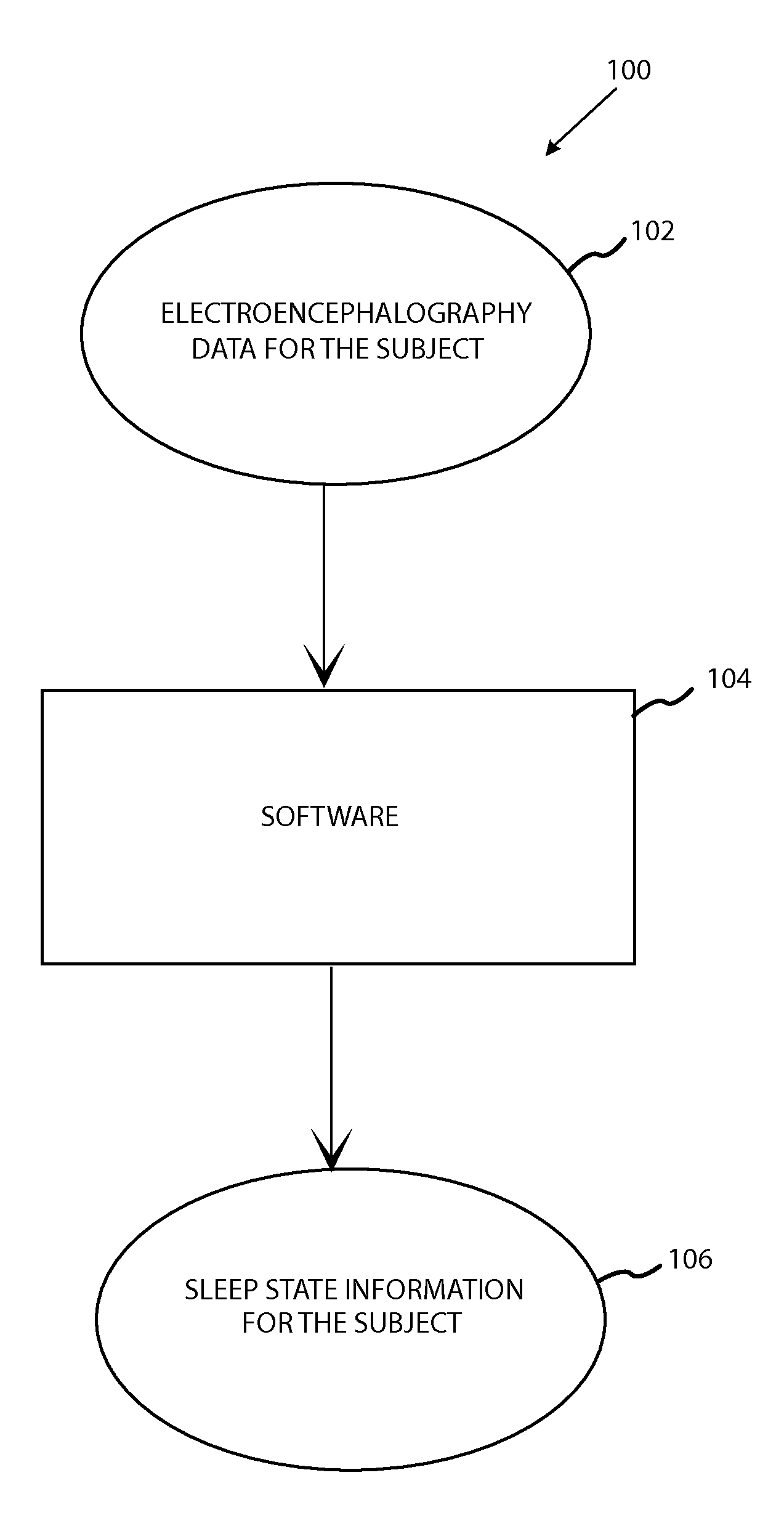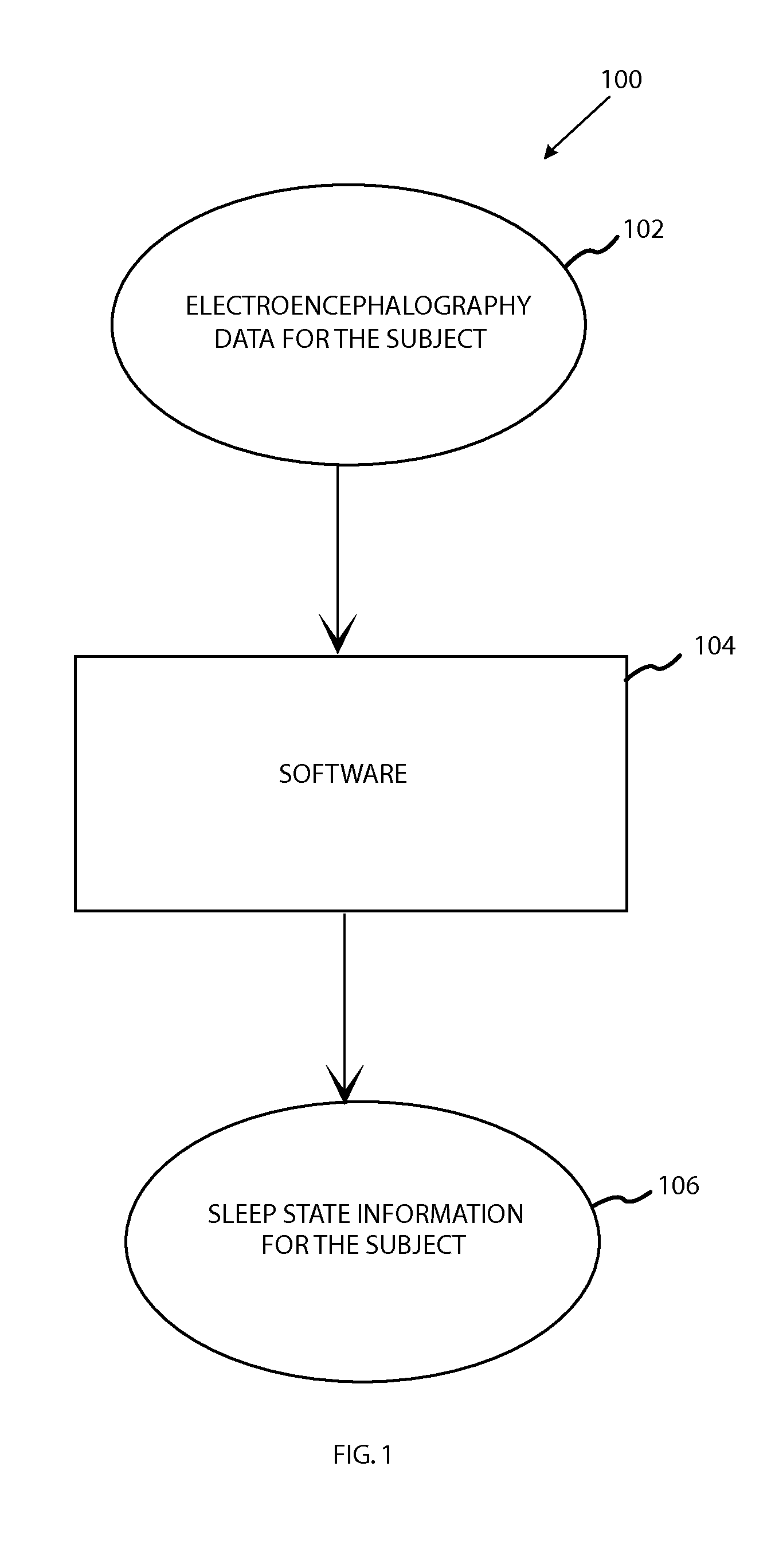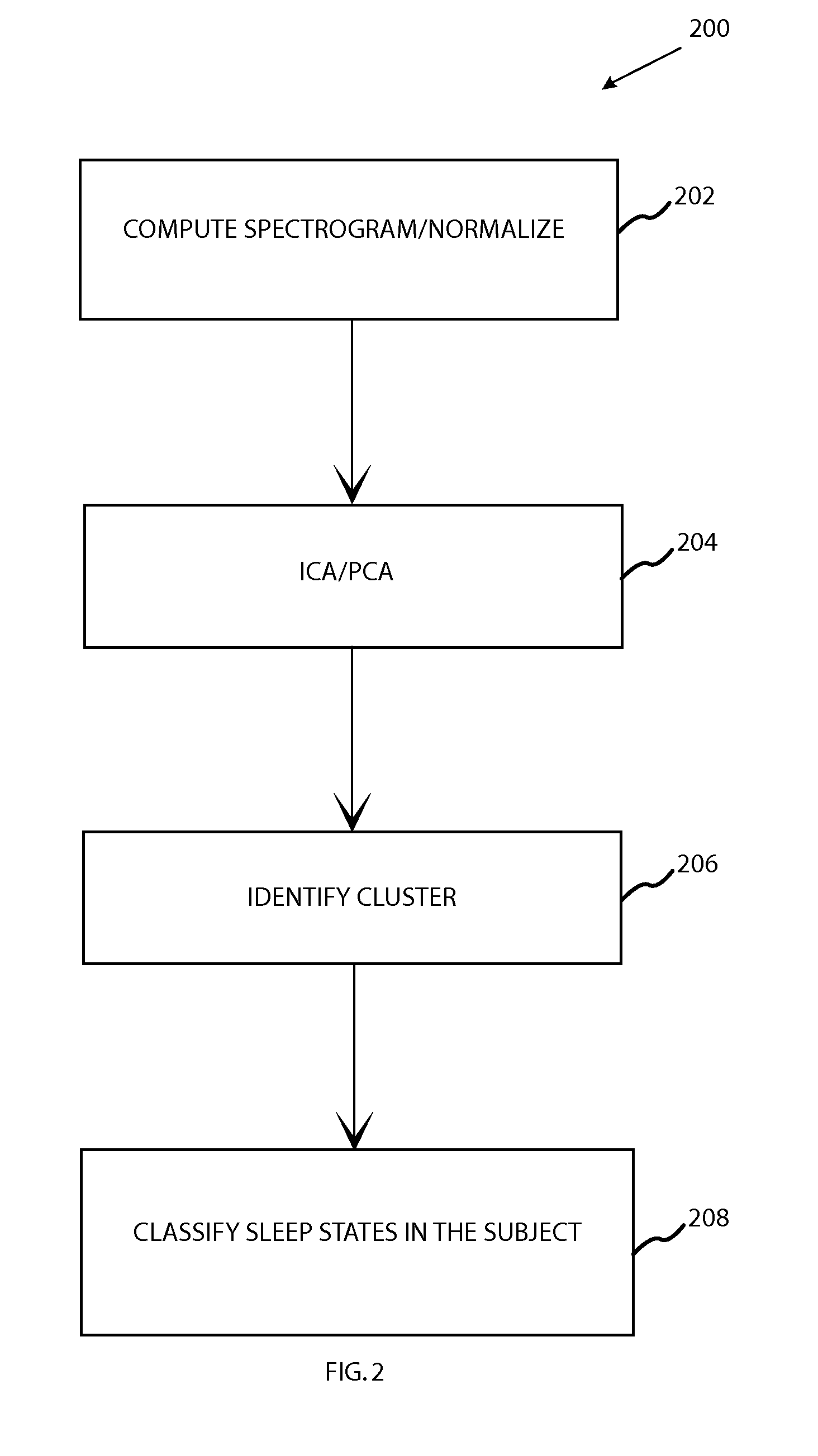Methods of Identifying Sleep & Waking Patterns and Uses
a technology of waking patterns and waking patterns, applied in the field of identifying sleep & waking patterns and uses, can solve the problems of difficult to objectively segment a night of sleep, difficult for the eeg to detect electrical activity, and detrimental effects of lack of sleep
- Summary
- Abstract
- Description
- Claims
- Application Information
AI Technical Summary
Benefits of technology
Problems solved by technology
Method used
Image
Examples
example 1
[0110]Rats were anesthetized with isoflurane. The scalp was gently shaved. Conductive electrogel was applied and a standard 6 mm gold plated electrode was secured with collodion. The resulting data were analyzed using advanced computational techniques, which are described above, by using software and techniques described in P.C.T. Application WO2006 / 1222201.
[0111]Voltage signal from the rat brain is collected by the electrodes and sent to the computer for analysis. The signal is broken down into roughly three second epochs of signal. The frequency spectra for each epoch are calculated to produce a whole recording spectrum. The resulting spectrum is then normalized across frequencies which allows for the detection of previously unidentified frequencies.
[0112]At each time epoch, only the frequency with the highest shift with respect to the baseline is mapped. The resulting map shows different signatures in this space relative to the baseline. Referring again to FIG. 2, these signature...
example 2
[0138]One channel of EEG (C3-A2 derivation) from twenty-six nights (8 hours each) of sleep was obtained from twenty-six different polysomnographic recordings conducted in twenty-six healthy human subjects. The EEG data and manual scoring was provided by the experimental procedures were approved by the Institutional Review Boards at each institution.
[0139]EEG data were collected at 256 Hz and bandpassed at 0.3-100 Hz with a 60 Hz notch filter (UCSD) or collected at 250 Hz and bandpassed at 0.53-70 Hz (MPI). These recordings were amplified at 10 K and manually scored in 30 sec epochs in accordance with R-K. For each recording, the whole night spectrogram was computed over 2 orthogonal tapers on 30 sec epochs using a standard multitaper technique. The power information was then normalized by z-scoring for each frequency bin (from 1 to 100 Hz, 30 bins per Hz) across time. This normalized spectrogram (NS) weighed each frequency band equally. Each 30 second segment was represented by the ...
example 3
[0161]Sleep data for four pairs of twins were analyzed utilizing the exemplary sleep staging techniques described above.
[0162]Each column in 1-4 corresponds to 4 pairs of twins (pair 1 is fraternal, pairs 2-4 is identical). Only REM is shown (temporal fragmentation across time). Twins exhibit a similar temporal fragmentation pattern (FIG. 34).
[0163]The general structure and techniques, and more specific embodiments which can be used to effect different ways of carrying out the more general goals are described herein.
PUM
 Login to View More
Login to View More Abstract
Description
Claims
Application Information
 Login to View More
Login to View More - R&D
- Intellectual Property
- Life Sciences
- Materials
- Tech Scout
- Unparalleled Data Quality
- Higher Quality Content
- 60% Fewer Hallucinations
Browse by: Latest US Patents, China's latest patents, Technical Efficacy Thesaurus, Application Domain, Technology Topic, Popular Technical Reports.
© 2025 PatSnap. All rights reserved.Legal|Privacy policy|Modern Slavery Act Transparency Statement|Sitemap|About US| Contact US: help@patsnap.com



